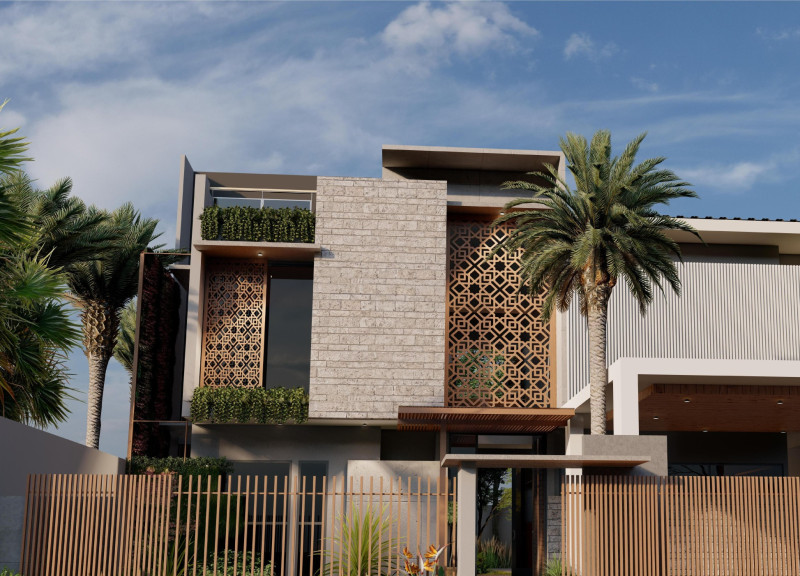5 key facts about this project
At the core of this architectural design is an emphasis on interaction with the environment. The layout is designed to maximize natural light and ventilation, creating comfortable and inviting spaces that foster a sense of well-being. The strategic arrangement of rooms and shared areas promotes social interaction while providing necessary privacy where needed. This balance is crucial for residential settings, where families or individuals seek both connectivity and solitude.
The exterior of the building captures attention with its carefully selected materials, chosen not only for their visual appeal but also for their performance characteristics. Concrete forms a vital component of the structure, providing durability and thermal mass, which enhances energy efficiency. Complementing this are elements of timber, which add warmth and character while promoting sustainability through responsible sourcing. Large expanses of glass are integrated into the design to bridge the gap between indoor and outdoor environments, allowing occupants to engage with the natural landscape surrounding the architecture. This not only brings in ample light but also connects the building to nature, reinforcing a sense of place.
Unique design approaches are evident in the architectural details throughout the project. For instance, the use of innovative shading devices or overhangs can reduce solar gain and improve the building’s energy performance while providing usable outdoor space. The roof design, possibly featuring green spaces or solar panel integration, reflects a commitment to sustainability and contemporary architectural practices. Each aspect of the design works together to create a cohesive whole that emphasizes both function and aesthetic integrity.
Interior spaces are conceptualized to enhance user experience. Open floor plans facilitate a fluid movement between different areas, while carefully placed partitioning allows for versatility in use. Specific areas, such as community hubs or gathering spaces, are designed to encourage social interaction and inclusivity. The careful selection of finishes and furnishings complements the overall aesthetic, ensuring that each element contributes to the functionality and beauty of the space.
Moreover, the integration of landscape architecture enhances the project’s appeal and functionality. Native plants and greenery not only beautify the surroundings but also contribute to the local ecosystem, promoting biodiversity and sustainability. The thoughtful landscaping can create inviting outdoor spaces that serve as extensions of the indoor areas, fostering a strong connection between nature and architecture.
This architectural project embodies a comprehensive understanding of its environment and the needs of its users. It stands as a testament to the possibilities of modern design, where form and function coexist harmoniously, creating spaces that are not only visually appealing but also deeply functional. The commitment to sustainable practices, material selection, and user experience speaks to a broader movement within contemporary architecture, aiming to create spaces that are responsible, engaging, and reflective of their context.
Readers interested in delving further into this architectural design are encouraged to explore the project presentation. Examining the architectural plans, sections, designs, and innovative ideas will provide deeper insights into how this project reshapes the relationship between architecture and its environment, as well as its impact on the community.


 Florabelle Caloy
Florabelle Caloy 























